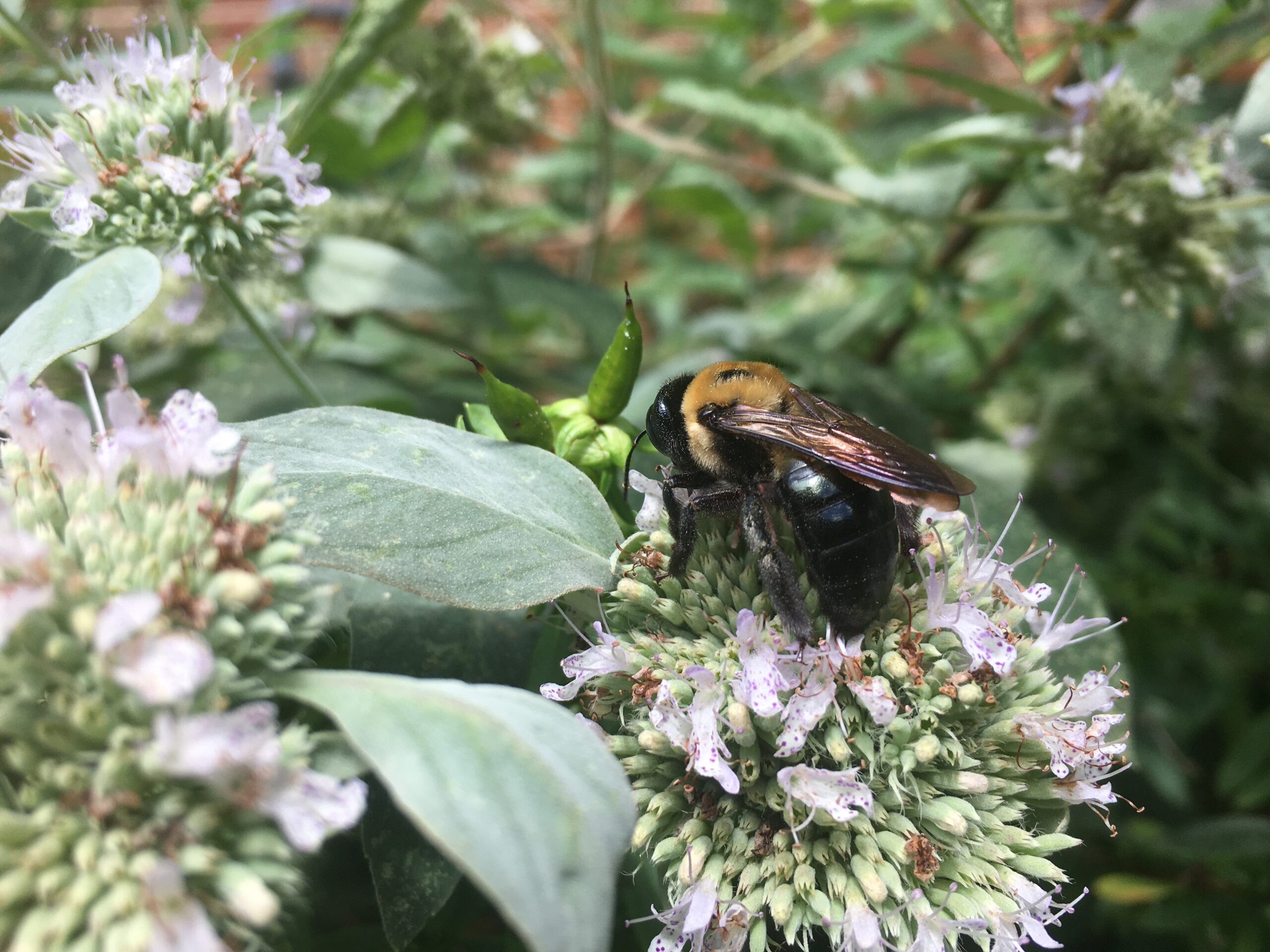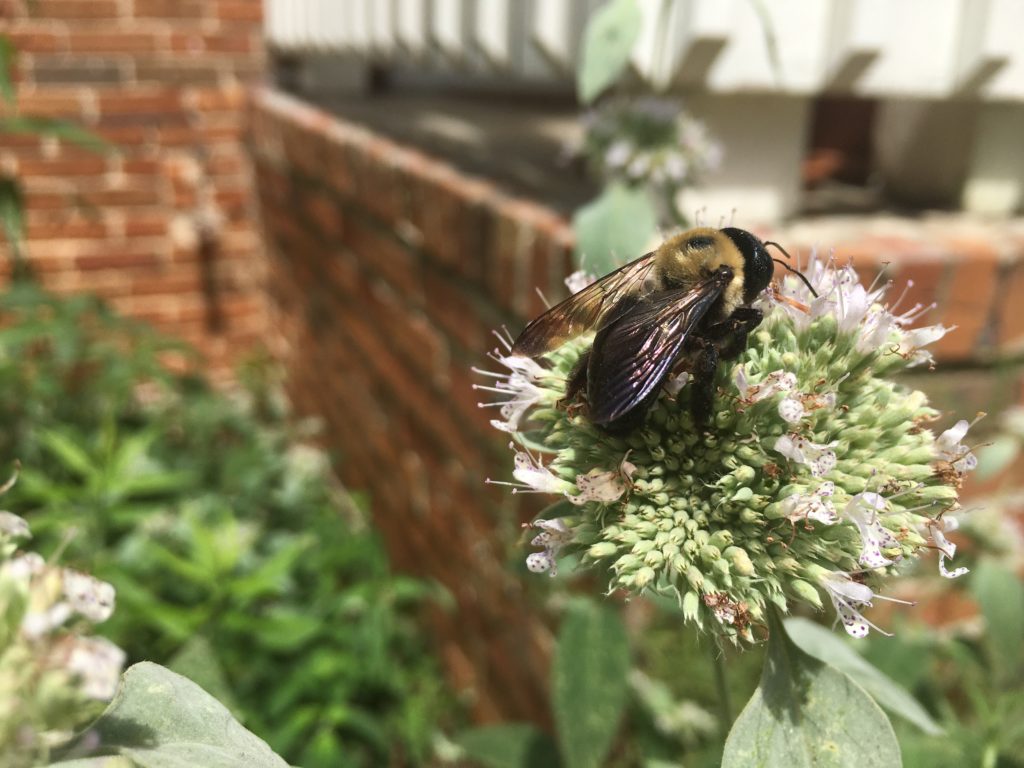How To Participate In Georgia’s Upcoming Census Of Bees And Butterflies

To participate in the community science project, you’ll need: a plant that attracts pollinators, a piece of paper to keep count of insect visitors, internet access and 15 minutes.
Molly Samuel / WABE
The second official Great Georgia Pollinator Census is coming up in a few weeks. The community science project organized by the University of Georgia is a count of bees and butterflies with a goal of teaching people about the insects around them, and to learn how the insects are doing.
To participate, you need a plant that attracts pollinators, a piece of paper to keep count of insect visitors, internet access and 15 minutes.
“You don’t have to be a Ph.D. entomologist,” said Becky Griffin, the community and school garden coordinator for University of Georgia extension and the organizer of the pollinator census. “You just have to learn a little bit of entomology to participate.”
The pollinator census website includes a guide on how to narrow down what sort of insect is visiting your plant and how to upload your final tally. On the days of the count, entomologists will also be standing by to help over social media.
This is the second year for the census. Eventually the information gathered by people around the state could be helpful for researchers who may be able to spot trends about pollinator populations at a time when there is concern for them because of pesticide use, development and climate change.
Griffin said the project is also about outreach.
“One of the goals is to increase the entomological literacy of our citizens,” she said. “As younger kids grow up and more people become interested, it is a way for them to truly see what is in their yard.”

For instance, not just honeybees, which were introduced from Europe, but also potentially one of the thousands of bees native to North America. Wasps can be pollinators, as can flies. (Griffin points out that anything that gets pollen from one plant to another could technically be considered a pollinator, including bears, but for the purposes of the count, she’s just interested in insects.)
In the first year of the pollinator census, close to 5,000 participants counted more than 131,000 insect visits, Griffin said.
This year will be different, since last year there were schools and organized events for people to count.
“I’ve been working with teachers and have created resources for them to actually do the census with their students virtually,” Griffin said.
She’s also encouraging people to count at home.
If you don’t have a plant that attracts bees and butterflies, Griffin said it’s not too late to get one in time for the census, which is scheduled for Aug. 21 and 22. Even a plant in a pot on a stoop or a balcony would work.







